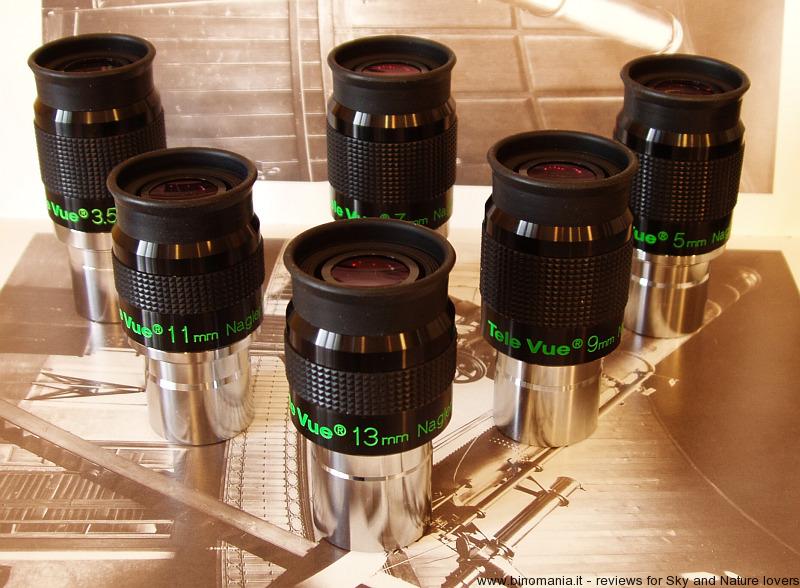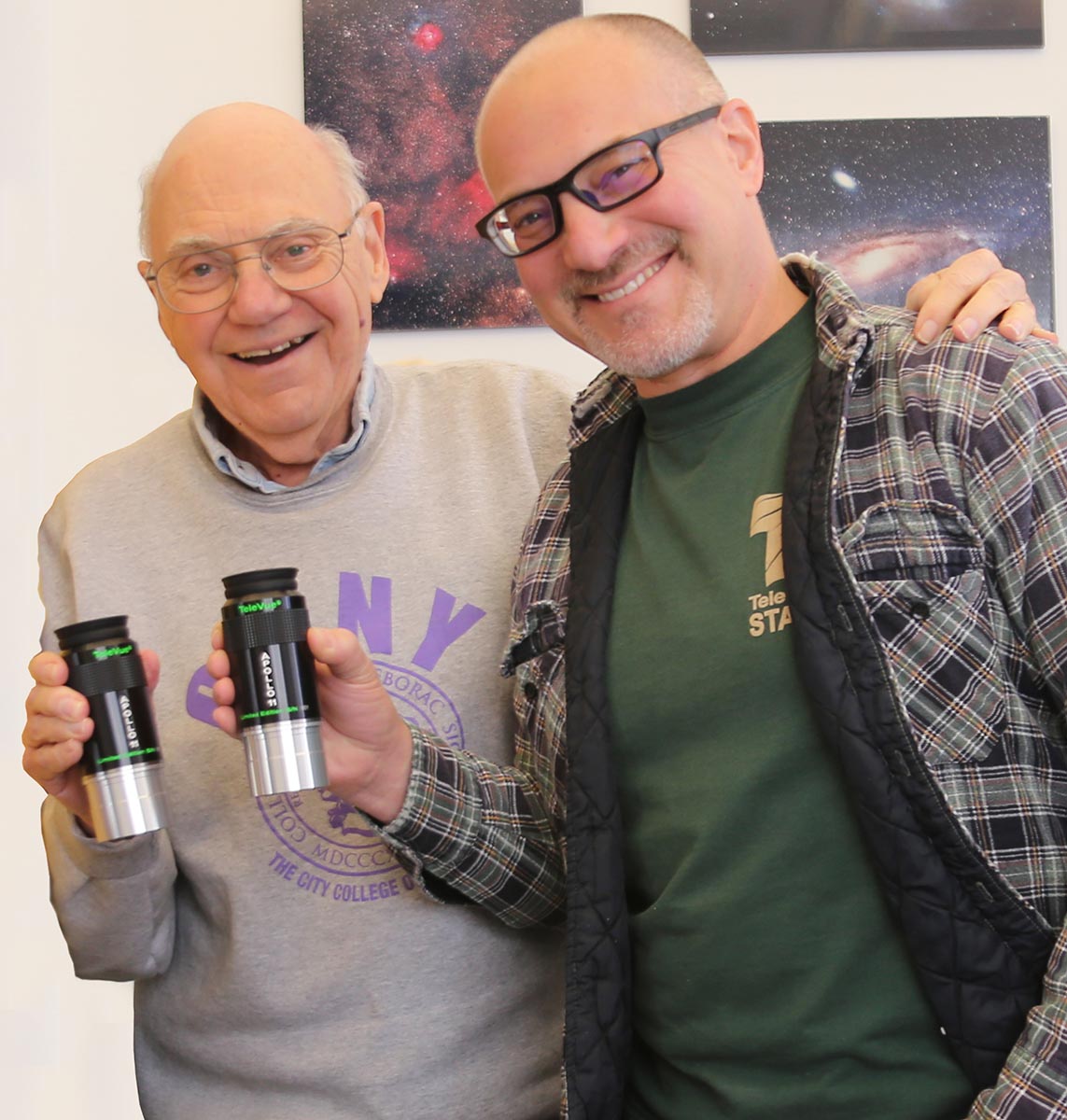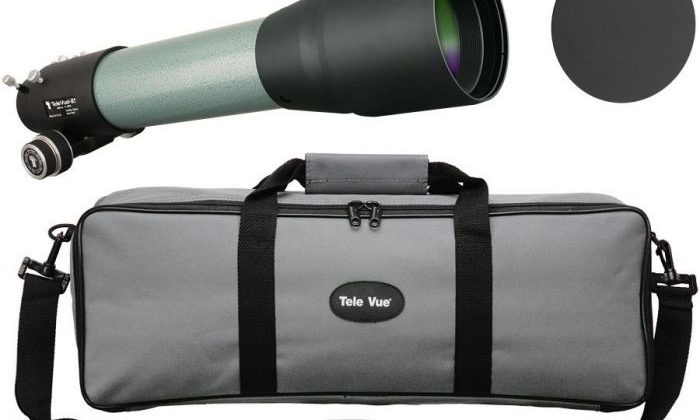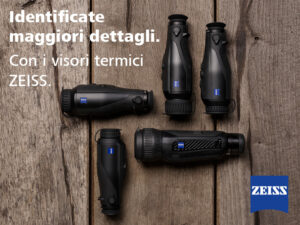Prima di tutto, grazie per avermi concesso questa intervista. Vorrei porle alcune domande sulla storia della sua azienda e sui progetti futuri. Inizio subito con la prima domanda:
D: Quando ha creato Tele Vue Optics Incorporated, nel 1977, avrebbe immaginato di diventare uno dei migliori produttori di ottica a livello mondiale?
R: Ho preparato una presentazione PowerPoint intitolata: “Ringrazio le mie stelle fortunate”. Penso che questo dica tutto. I tuoi lettori possono vederlo, visitando questo link: i-thank-my-lucky-stars, Ma per rispondere alla tua domanda in modo più diretto, posso dire che ho fondato TeleVue per sviluppare inizialmente obiettivi per i sistemi TV di proiezione domestica. Sapendo che avrei voluto ampliare la produzione anche all’ottica astronomica, ho chiamato l’azienda in modo che il nome del brand fosse appropriato sia per i miei immediati progetti televisivi sia per i futuri progetti riguardanti i telescopi astronomici.
Nella mia carriera di progettista ottico, ho avuto la fortuna di aver lavorato a progetti di “performance at all costs” per la NASA e l’esercito americano, nonché a progetti di “cost-savings at all costs” come capo progettista ottico presso la Keystone Camera Company. L’equilibrio tra i due mi è servito tanto, quando ho avviato la mia azienda di ottica commerciale.
Il mio massimo desiderio, all’epoca, era di portare nel mio cortile di osservazione le visioni della “passeggiata spaziale” che avevo sperimentato sviluppando i simulatori Gemini e Apollo LEM della NASA. L’unico modo per riuscirci era trovare un modo per progettare e produrre il mio oculare con un prezzo di vendita abbastanza economico da consentire a molti astrofili di acquistarne uno.
Ho progettato, quindi, il primo oculare “Nagler” nel 1979. Non mi sarei mai aspettato di arrivare dove siamo oggi, ma ringrazio le mie buone stelle, che nel corso degli anni ci sono stati abbastanza astrofili là fuori che hanno continuato ad apprezzare e valutare la nostra “visione” riguardo i rifrattori, gli oculari e gli accessori ottici che davvero spingono i limiti delle prestazioni.

2) C’è un progetto di telescopio/oculare ancora incompiuto e che le è rimasto nel cuore?
R:La cosa migliore per me è lavorare allo sviluppo di nuovi progetti, con la famiglia e i nostri nuovi dipendenti, perché è costantemente stimolante. Quindi, sì, ci sono vari progetti, ma non vengono mai annunciati finché non sono pronti per il mercato.
3) Secondo lei, cosa si deve aspettare un astrofilo che possiede l’NP101, utilizzando l’NP127is? Mi direbbe, gentilmente, di più a riguardo? Perché i telescopi NP dovrebbero essere preferiti rispetto al più classico design a tripletto
R:Dovrebbe semplicemente aspettarsi di più rispetto a tutto ciò che gli è piaciuto utilizzando l’NP101. I modelli 127is e 101is sono telescopi otticamente simili e hanno lo stesso focheggiatore che include un pignone di riduzione 10:1, compensazione dell’inclinazione e un robusto design meccanico. Con la stessa formidabile correzione del colore, la maggiore apertura aumenterà la luminosità e la risoluzione per ottenere più dettagli nelle osservazioni lunari, planetarie e del cielo profondo. A differenza dei progetti che prevedono semplici doppietti e tripletti, i campi inquadrati della serie Nagler-Petzval sono spianati e richiedono solo un semplice correttore di campo dell’obiettivo per l’uso con sensori molto grandi. Con meno massa di vetro nella parte anteriore, si raffreddano più rapidamente dei tripletti e sono molto meno sensibili nell’allineamento ottico grazie a un montaggio più semplice

Immagine: Lo schema ottico del TeleVue-NP127Fli
4) In Italia c’è stato un grande cambiamento nel campo dell’astronomia amatoriale. I giovani astrofili si avvicinano principalmente alla fotografia e non si preoccupano dell’osservazione contemplativa. Qual è la sua opinione a riguardo?
R:Personalmente, seppure io sia molto impressionato dagli attuali risultati fotografici, l’esperienza visiva dal vivo mi entusiasma di più, sull’argomento potete leggere i miei saggi SaturnDay e WhyBeAnAmateurAstronomer.
5) Per quanto riguarda gli oculari grandangolari, pensa di aver già raggiunto i limiti consentiti dall’attuale tecnologia di produzione o ci sono ancora margini di miglioramento? Dovremmo aspettarci qualche nuovo design nel prossimo futuro?
R:Tecnicamente, esiste l’opportunità di progettare oculari con campo visivo apparente più ampio. Con i progressi nei trattamenti, anche sulle superfici cementate, ci sono sempre miglioramenti possibili, ma tanti fattori devono essere bilanciati insieme per realizzare un prodotto valido. Penso che parte di ciò che ci rende “Tele Vue”, ossia il nostro “Ethos”, è che non realizzeremo un prodotto soltanto per dire: “guarda cosa abbiamo fatto”, se questo significa raggiungere dei compromessi in aree che riteniamo importanti per “l’equilibrio” del prodotto complessivo. Alcuni esempi del nostro modus operandi, sono visibili nella limitazione delle lunghezze focali delle serie Ethos, Delos e DeLite rispettivamente a 21 mm, 17,3 mm e 18,2 mm. Andare oltre, avrebbe introdotto la vignettatura oltre ciò che consideriamo il nostro “equilibrio felice”. Come ho accennato in precedenza, non posso parlare di prodotti futuri fino a quando non saranno pronti per il lancio.
6) So che non può anticipare molto, ma provo a chiederle ugualmente se sono previste nuove edizioni limitate, come ad esempio l’oculare commemorativo della missione Apollo 11
R:Sia la missione Apollo 11 che l’oculare Apollo 11 sono stati progetti di cui sono orgoglioso di averne fatto parte. Non abbiamo mai realizzato una versione “Anniversario”, “Commemorativa”, “Speciale” o “Limitata” di nessuno dei nostri prodotti nei nostri oltre 40 anni di esistenza. Tuttavia, non potevo immaginare niente di più appropriato per celebrare il 50° anniversario dello sbarco degli uomini sulla Luna, considerando il suo impatto e la sua ispirazione sulla mia carriera. L’unica condizione per realizzare questo progetto era che doveva essere “un colpo…lunare”. Per noi, questo oculare è stato una missione compiuta! Sebbene non ci saranno più oculari Apollo 11, ogni progetto che fa avanzare l’arte, genera nuove idee. Se puoi imparare dai tuoi errori, perché non imparare anche dai tuoi successi?

7) La maggior parte dei lettori di binomania.it, ama la visione binoculare. Ci sarà un aggiornamento futuro della famosa torretta binoculare Bino-Vue
R:Anche se adoro l’osservazione binoculare e il nostro Bino Vue, purtroppo il nostro fornitore si è ritirato, non aveva alcun interesse a consentirci di proseguire la produzione. Ha deciso di non produrlo piu’, è stata una sua scelta personale e posso comprenderla. Per quanto riguarda un eventuale sostituto del Bino Vue, noi non diciamo mai: “mai”. Tuttavia, molto probabilmente, sino a quando ci saranno prodotti competitivi e di alta qualità, eviteremo di rientrare nel mercato.
8) Sempre più appassionati italiano stanno acquistando i binocoli con prismi angolati che possono utilizzare la maggior parte deli oculari astronomici. Quali oculari TeleVue si sentirebbe di consigliare per la visione binoculare e perché
R:In generale, consiglierei i DeLites, comodi con o senza occhiali, nitidi e contrastati e con 62° di campo apparente. Sebbene siano più pesanti e più grandi, anche i Delos con 72° di campo apparente funzionano molto bene. Se gli occhiali non sono necessari, suggerisco il Panoptic da 24 mm o il Nagler da 16 mm tipo 5 o il Nagler tipo 6 con lunghezze focali appropriate all’utilizzo del binocolo.
9) Alcuni miei amici birdwatchers americani mi hanno confermato di utilizzare i TeleVue TV-76 e TV-85 con profitto. In Italia il birdwatching è ancora agli inizi, ci sono molti più cacciatori e quindi si vendono più cannocchiali. Perché i birdwatchers italiani dovrebbero considerare l’acquisto di un rifrattore Tele Vue?
R:Io chiamo il nostro telescopio TeleVue TV-85 “Riccioli d’oro”. È stato valutato come la “migliore ottica al mondo” dal laboratorio di ornitologia Cornell. Sia il TV-85 che il TV-76 (con tubi Evergreen per gli amanti degli uccelli) sono comodi, versatili, robusti e ottimi strumenti per praticare anche l’astronomia. Anche per i tuoi amici birdwatchers, gli oculari DeLite sono comodi e utili magari da utilizzare con il nostro Fonemate che consente di ottenere fotografie nitide e a “tutto campo” attraverso lo smartphone. https://televue.com/Birdscope

10) Potrebbe dirmi quali sono i telescopi e gli oculari TeleVue più venduti “di sempre” e perché?
R:I telescopi sono facili da riconoscere perché sono serializzati. Il Pronto regna ancora sovrano tra i nostri telescopi piu’ venduti, ma il Tele Vue-85 sta recuperando terreno ed è ancora in produzione. Questi due strumenti ottici hanno colpito nel segno con la loro combinazione di: qualità costruttiva, prestazioni ottiche, portabilità, facilità d’uso, versatilità e prezzo. Per quanto riguarda gli oculari, è difficile da dire perché dovremmo guardare indietro e analizzare oltre 40 anni di vendite! Se dovessi indovinare, direi il Plössl da 32 mm perché è in produzione dal 1982 e si colloca sempre tra i primi cinque nelle vendite annuali.
11) Come spero avrà visto oltre alla recensione del TeleVue NP101, ho appena pubblicato su Binomania.it la video recensione del TeleVue- NP127is. Oltre alle ottime capacità di imaging, ho gradito la correzione del colore da vero apocromatico e la possibilità di raggiungere elevati ingrandimenti. Ho davvero apprezzato la vostra scelta di utilizzare un doppietto 127 ED aperto a F/11 con un doppietto spianatore/riduttore di campo. È solo questa la vera ricetta per le ottime prestazioni di questo telescopio, o il correttore è servito anche per correggere ulteriormente le aberrazioni cromatiche?
R:Grazie per la tua meravigliosa recensione sull’NP101 e per i complimenti relativi al NP127is. Ho lavorato con quel progetto sin dal 1980 e allo sviluppo del nostro primo telescopio, l’MPT (Multi-Purpose Telescope). Per quanto riguarda lo schema ottico, vorrei chiarire questo punto in quanto spesso viene frainteso. Il progetto Petzval va considerato nel suo insieme. I due gruppi non funzioneranno bene indipendentemente l’uno dall’altro. Un’analogia sarebbe come separare un oculare Nagler e chiamare la metà superiore “oculare” e la sezione inferiore “Barlow”. È una semplificazione eccessiva che è semplicemente errata. I gruppi posteriori nei miei progetti sono sempre stati significativamente più avanti del piano focale in modo da avere un effetto preciso su tutte le aberrazioni, incluso il colore. (Felice di averlo citato nella recensione prima della risposta di Nagler – n.d.a)
12) Ricordo con piacere il doppietto Tele Vue 102mm F.8.6 ormai fuori produzione. Potrebbe esserci la possibilità di vedere un “telescopio visivo planetario” prodotto da Tele Vue? Penso che un Tele Vue PL 127 F/9 potrebbe essere un fantastico regalo per gli astrofili che amano le osservazioni lunari e planetarie. Cosa ne pensa?
R:Mi dispiace, mi sono perso ciò che pensavi mancasse nelle prestazioni dei nostri cannocchiali NP. LOL!!! Non vedo davvero alcun vantaggio in un simile cannocchiale rispetto alla versatilità e alle prestazioni della serie di cannocchiali NP. Mentre si potrebbe suggerire che ci sarebbe un vantaggio di prezzo, il che sarebbe vero solo se il mercato per un tale ambito fosse abbastanza grande. Penso che la scomparsa del Tele Vue-102 ci dica tutto ciò che dobbiamo sapere sul mercato.
13) Ora l’ultima domanda che penso piacerà ai lettori di binomania? Utilizza mai il binocolo durante le osservazioni?
R:Certamente, lo utilizzo talvolta per la scansione del cielo prima di “approfondire” con i telescopi e gli oculari e, naturalmente, per il birdwatching.
14) La ringrazio tanto per l’attenzione e il tempo dedicato a me e ai miei lettori. Spero di incontrarla in Italia, in un prossimo futuro.
R:Spero di incontrarti anche io in Italia! Ci sono stato alcune volte e apprezzo la vostra arte, il cibo, l’architettura e la storia. Ho amato soprattutto Roma e Venezia. Inoltre, mia moglie Judi mi ha salvato la vita, mentre stavo indietreggiando per scattarle una foto quando eravamo al livello più alto sulla “Torre di Pisa”. Non mi ero reso conto che, dietro di me, non c’era alcuna ringhiera!
Vorrei anche ringraziare David, mio figlio e presidente di Tele Vue, per aver contribuito molto a questa intervista. Molti potrebbero non rendersi conto che negli ultimi 33 anni ha messo le mani dentro e gli occhi su ogni aspetto di quello che è conosciuto come Tele Vue.
Albert Nagler
Interview with Mr Nagler – English version
First of all, thank you for considering my interview and please excuse me for my poor English. I would like to ask you a few questions about the history of your company and your future projects. So, I’m going to start by asking you the first question:
- When did you create Tele Vue Optics Incorporated, in 1977, would you have imagined becoming one of the worldwide top optical manufacturers?
- I have a PowerPoint presentation I titled “I Thank My Lucky Stars.” I think that about says it all. Your readers can view it here. i-thank-my-lucky-stars But to answer your question more directly, I founded Tele Vue to first develop lenses for in-home projection TV systems. Knowing I’d want to push the envelope for astronomical optics as well, I named the company so it would be appropriate for both my immediate television and future telescope optical projects.
In my career as an optical designer, I was fortunate enough to have worked on “performance at all costs” projects for NASA and the U.S. military, as well as “cost-savings at all costs” projects as Chief Optical Designer at Keystone Camera Company. The balance of the two served me well as I started my own consumer optics company.
My ultimate dream at the time was to bring the “spacewalk” views I had experienced developing NASA’s Gemini and Apollo LEM simulators to my own backyard observing. The only way that was going to happen was if I could find a way to design and produce my eyepiece “inexpensively” enough that a whole lot of other amateur astronomers could afford to buy one as well.
I designed that first “Nagler” eyepiece in 1979. I never expected to be where we are today, but I thank my lucky stars that through the years there have been enough amateur astronomers out there who continue to appreciate and value our vision for refractors, eyepieces and optical accessories that really push performance limits.
- Is there a telescope/eyepiece project still undone and that’s left in your heart?
- Best of all, working with family and our astronomy enthusiast employees to develop new projects is constantly inspiring. So, Yes – but new projects are never announced until they are ready for market.
- In your opinion, what should an amateur astronomer who owns the NP101 expect, using the NP127is? Would you kindly tell me more about it? Why should NP telescopes be preferred over the more classic triplet design?
- You should simply expect more of everything you liked about the NP101. The 127is and 101is models are optically similar layouts and have the same focuser which includes a 10:1 reduction pinion, tilt compensation, and robust mechanical design. With the same terrific color correction, the additional aperture will gain you brightness and resolution increases to tease out more detail in lunar, planetary, and deep sky features.
Unlike doublet and triplet designs, the Nagler-Petzval series fields are flat, needing only a simple lens field corrector for use with very large sensors. With less glass mass in the front, they also have cool down quicker than triplets and are far less sensitive in optical alignment for easier assembly.
- In Italy there has been a big change in the field of visual astronomy. Young people mainly approach photography and do not care about contemplative observation. What is your opinion on this?
- Personally, while I’m impressed with current photographic achievements, the live visual experience thrills me more, read my essay SaturnDay and WhyBeAnAmateurAstronomer.
- As far as wide field eyepieces are concerned, do you think you have already reached the limits allowed by the current production technology or there is still room for improvements? Should we expect any new design in the near future?
- Technically, there is opportunity to design wider apparent field of view eyepieces. With advances in coatings, including on cemented surfaces, there are always improvements possible, but so many factors must be balanced together to make a viable product. I think part of what makes us “Tele Vue,” our “ethos” if you will, is that we won’t make a product just to say “look what we did” if that means compromises in areas we feel are important to the “balance” of the product overall. Some examples of this restraint are limiting the Ethos, Delos and DeLite series focal lengths to 21mm, 17.3mm, and 18.2mm respectively. To go longer would introduce vignetting beyond what we consider our “happy balance.”
As previously mentioned, we don’t comment on future products until they are ready to launch.
- For this reason, are foreseen new limited editions of new commemorative designs like the Apollo 11?
- Both the Apollo 11 and Apollo 11 (eyepiece and mission) were projects I was proud to be part of. We never did an “Anniversary,” “Commemorative,” “Special,” or “Limited” edition version of any of our products in our 40+ year existence. However, I couldn’t imagine anything more appropriate to celebrate than the 50th anniversary of men landing on the Moon considering its impact and inspiration on my career. The one stipulation to doing this project was that it had to be “a Moon shot.” We consider it, mission accomplished.
Though there won’t be any more Apollo 11 eyepieces, every project that advances the art, does breed new ideas. If you can learn from your mistakes, don’t you also learn from your successes?
- Most readers of my online magazine love binocular vision. Will there be a future update of your famous Bino-Vue?
- While I also love bino viewing and our Bino Vue, our supplier retired and had no interest in allowing us to pursue continued production. He retired his product his way and I can understand that.
As far as a replacement, we’ll never say “never.” However, as long as there are competitive, high quality products out there, we’ll probably refrain from re-entering the market.
- More and more enthusiasts are buying angled prism binoculars that can use astronomical eyepieces. Which Tele Vue eyepieces do you feel like advising for binocular views and why?
- Generally, I’d recommend DeLites, comfortable with or without glasses, sharp, and contrasty 62° AFoV. While heavier and larger, the 72° AFoV Delos also work very well. If eyeglasses are not needed, I suggest the 24mm Panoptic or 16mm Nagler type 5, and Nagler type 6s in appropriate focal lengths.
- Some of my American birdwatcher friends have confirmed to me that they use TV-76 and TV-85 profitably. In Italy birdwatching is still at an early stage, there are many more hunters and therefore more spotting scopes are sold. Why should Italian birdwatchers consider buying a Tele Vue refractor?
- I call our TV-85 our “Goldilocks” scope. It was rated “best optics in the world” by the Cornell Ornithology lab. Both the TV-85 and TV-76 (with Evergreen tubes for birders) are convenient, versatile, rugged, and great pathways to crossover into astronomy. Also for your birdwatching friends, DeLite eyepieces are convenient and useful with our Fonemate for sharp, full-field cell phone photography. https://televue.com/Birdscope
- Could you tell me which are the best-selling Tele Vue telescope and eyepiece “ever” and why?
- Telescopes are easy to tell because they are serialized. The Pronto still reigns supreme among our scopes but the Tele Vue-85 is catching up and still in production. These two scopes hit the mark with their combination of quality construction, optical performance, portability, ease of use, versatility, and price.
As for eyepieces, it’s hard to say because we’d have to look back over 40-years of sales! If I had to guess, I’d say the 32mm Plössl because it has been in production since 1982 and always ranks amongst the top five in yearly sales.
- I am publishing on Binomania.it the NP 127 video review. In addition to the excellent imaging capabilities I appreciated the apochromatic color correction and the ability to allow high magnifications. I really appreciated the decision to use a 127 ED doublet open at F/11 with a doublet field flattener/reducer lens. Is this just the real recipe for the excellent performances of this telescope, or the corrector itself is used to further correct the color aberrations as well?
- Thank you for your wonderful review on the NP101is and the compliments on the NP127is. I’ve been working with that design form since 1980 and the development of our first telescope, the MPT (Multi-Purpose Telescope).
Regarding the optical layout, I’d like to make this point very clear as it is often misunderstood. The Petzval design must be considered as a whole. The two groups will not function well independently from each other. An analogy would be like separating a Nagler eyepiece and calling the upper half the “eyepiece” and the lower section a “Barlow.” It’s an oversimplification that is just plain incorrect.
The rear groups in my designs have always been significantly ahead of the focal plane so as to have a definite effect on all aberrations, including color.
- I remember with pleasure the now discontinued Tele Vue 102mm F.8.6 doublet. Could there be a possibility to see a “planetary visual telescope” produced by Tele Vue? I think that a Tele Vue PL 127 F/9 could be a fantastic gift for amateur astronomers who love lunar and planetary observations. What do you think about it?
- I’m sorry, I missed what you thought was lacking in the performance of our NP scopes. LOL!!! I really see no advantage in such a scope over the versatility and performance of the NP-series of scopes. While one could suggest there would be a price advantage, which would only be true if the market for such a scope was big enough. I think the demise of the Tele Vue-102 tells us all we need to know about the market.
- Now the last question that I think will please binomania readers? Do you use binoculars during your observing time ?
- A little for sky scanning before I dig into scopes and eyepieces, and naturally for birding.
Dear Mr. Nagler, I thank you so much for your attention and the time spent for me and my readers. I hope to meet you in Italy, sometime in the near future.
- I hope to meet you in Italy too! I’ve been there a few times and appreciate the art, food, architecture and history. I loved Rome and Venice, especially. If Fact, my wife Judi saved my life, as I was backing up to take a picture of her while we were on the top level of the “Leaning Tower of Pisa,” not realizing there was no railing behind me.
I’d also like to thank my son and President of Tele Vue, David, for contributing greatly to this interview. Many may not realize that for the last 33-years he has had his hands in and eyes on every facet of what you know as Tele Vue.
Albert Nagler
Piergiovanni Salimbeni è un giornalista indipendente iscritto all’Albo Professionale dei Giornalisti della Lombardia. Si è laureato presso l’Università Statale di Milano con una tesi riguardante : ” I danni da inquinamento elettromagnetico e il caso Radio Vaticana”. E’ responsabile dei siti web: www.binomania.it e www.termicienotturni.it. Pubblica video recensioni sul suo canale YouTube. Dal 1997 collabora con mensili e quotidiani nazionali, sempre nei settori di sua competenza: ottica sportiva, astronomica, fotografica, sistemi per la visione notturna e termica, geologia lunare. Coltiva da sempre la passione per la scrittura, nel 2020 ha esordito con pseudonimo con un editore classico, mentre nel 2022 ha pubblicato su Amazon il suo secondo romanzo “Il Purificatore”, disponibile anche in formato e-book. Nel tempo libero leggi molti libri, pratica tiro sportivo a lunga distanza, fototrappolaggio, digiscoping, fotografia di paesaggio.
























